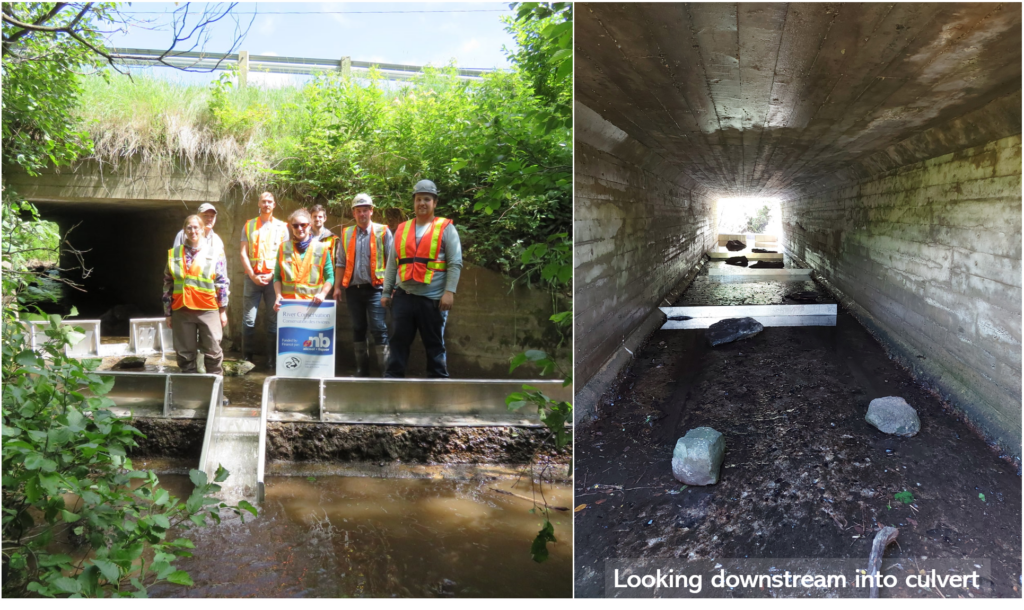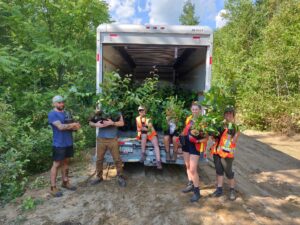 Improving aquatic habitat and connectivity in our watershed is one of the priority targets in our strategic plan. Given that 68 % of the culverts surveyed in the Nashwaak Watershed are partial to full barriers to fish passage, there remains much to be done by way of increasing access for fish to coldwater tributaries and refugia. According to DFO barriers to fish passage are the greatest threat to healthy freshwater ecosystems. DFO identified the Nashwaak River as a priority salmon river for recovery in the lower Wolastoq/St. John River system. Thus far in 2020 we have already carried out one successful culvert remediation project with two more planned before the end of September.
Improving aquatic habitat and connectivity in our watershed is one of the priority targets in our strategic plan. Given that 68 % of the culverts surveyed in the Nashwaak Watershed are partial to full barriers to fish passage, there remains much to be done by way of increasing access for fish to coldwater tributaries and refugia. According to DFO barriers to fish passage are the greatest threat to healthy freshwater ecosystems. DFO identified the Nashwaak River as a priority salmon river for recovery in the lower Wolastoq/St. John River system. Thus far in 2020 we have already carried out one successful culvert remediation project with two more planned before the end of September.
The East Ryan Brook fish ladder installation took place this summer, where a concrete box culvert was retrofitted with an aluminum fish ladder. The culvert was impeding access to cold water upstream habitat for fish, including Brook Trout and Atlantic Salmon, which cannot tolerate sustained water temperatures above 22 °C. Access to cold water refugia is of particular importance during hot, dry summer weather as we have been having this year. The sustained high temperatures this summer have resulted in water temperatures in the Nashwaak River this August exceeding 25 °C in some areas. Electrofishing last year found many brook trout using this coldwater stream.
Several baffles were installed to backwater the culvert so that there is enough water for fish to pass through the culvert. Heavy rocks were also placed in the culvert to simulate a natural stream bed. The combination of rocks and baffles serves to slow water moving through the culvert by making it meander so that it is easier for fish to swim upstream.
We would like to thank Tek Steel LTD for manufacturing and installing the ladder, HILCON Ltd for the design, BGC Engineering Inc for assisting with the installation, and the New Brunswick Department of Transport & Infrastructure for allowing us to work on their infrastructure. This project was funded by The Atlantic Salmon Conservation Foundation, WWF Canada, the NB Environmental Trust Fund, and the NB Wildlife Trust Fund.

